The Maniac
Benjamín Labatut
September, 2024

Besides Wolf Hall, I wouldn’t say I normally go for historical fiction. But this book gets away with it because it reads like non-fiction with better style. It’s an eerie and philosophical triptych about the frontiers of knowledge, told anecdotally from a large cast of observers in a manner very reminiscent of Robert Bolaño.
In the first section, an Austrian physicist studying turbulence sees so deep into things that he goes crazy and kills his son and himself (stick with me here).
The second section makes up the bulk of the book, focused on the genius and mania of the polymath Johnny von Neumann (Maniac is also his pioneering computer, which didn’t require a complete re-architecture to run new programs). He’s the smartest guy in any room, even when that room is a meeting of the Manhattan Project—it’s a set piece I appreciated seeing from an alternate angle versus other works, like Surely You’re Joking, Mr. Feynman! and Oppenheimer. The story tracks Johnny’s rise from child prodigy to his revolutionary work in math, computing, quantum physics, and economics, to his death bed, where government officials kept guard to make sure he didn’t divulge any state secrets while drugged up for pancreatic cancer. The dude was not normal and had no chill; he had a hand in everything, made so much of our modern world.
The final section narrates the tense battle between AlphaGo and Lee Sedol, the Korean grandmaster of the board game go, which is mathematically much more complicated than chess. It’s relevant to the current era, given the current hype around AI and the recent awarding of the Nobel prize in chemistry to Demis Hassabis, a character who appears in the book, the co-founder of DeepMind and creator of AlphaGo.
While interesting, the final section doesn’t quite reach the heights of the first two, maybe because the characters aren’t as dark, or maybe because it was written too soon. In time, maybe we will see the AI learn too much and go crazy too.
Tremor
Teju Cole
January, 2024
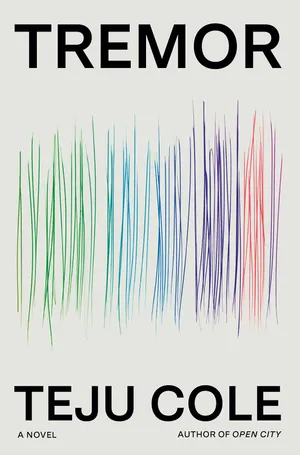
I was blown away by Teju Cole’s debut novel Open City when I read it in 2012, though part of the appeal was surely that I lived in New York at the time, just north of Central Park, and the protagonist, a flaneur, walked all over uptown. It felt like our footprints overlapped, like we were breathing the same air.
Tremor, his second novel all these years later, is an assured follow-up. It’s manicured and spare, I noticed, in marked contrast to the first draft of my own novel, which is a bit of a kitchen sink draft. He leaves just enough in to tie it all together, a series of life slices thematically centered on violence in art, from the casual, if not explicit, racism toward the protagonist, a photographer, to the thefts of colonialism.
Thelonious Monk
Robin D.G. Kelley
September, 2023
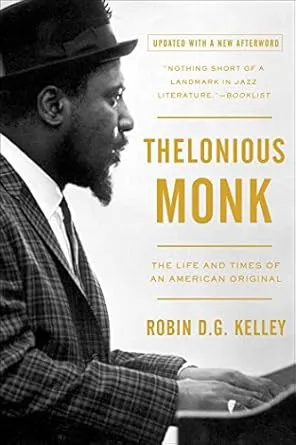
Like most high school kids I’m sure, I used to sleep to 100+ jazz albums on shuffle. Bebop, big bands, crooners. My favorites were Miles Davis, Cannonball Adderley, Art Blakey, and Thelonious Monk. Even for such a sophisticate, the first time I heard Monk, I thought he was drunk or something: “Why is he so sloppy? He’s hitting all the wrong notes!” But I quickly realized that he was hitting exactly the notes that he intended to, and that the discordance somehow elevated what he was doing, gave the sound this sort of 3D effect that hit much harder than a straighter take.
A number of years later, when I moved into the first apartment I ever lived in alone, I stopped at a music store down the road and picked up a book of Monk transcriptions, spending time in the evenings plunking at the keys in an attempt to give life to “Between the Devil and the Deep Blue Sea.” As a pianist myself with some 13 years of classical training, I hoped that one day my own rendition, basically a paint-by-numbers, would sound as graceful and effortless as his, or at least less tortured (spoiler: it never did.)
That song was always important to me, and it threaded through my life, much like Vinteuil’s Sonata in Proust. It’s my ringtone even today, if for some reason my ringer is on. But it’s not even an original work by him, and it doesn’t figure prominently in his story arc. I was glad for this book, to get to know the man himself—a jokester, at times childlike, a musician’s musician, a consummate teacher, a sufferer of bipolar disorder, a pioneer who never got the fame or credit he deserved—along with the broader context and the well-peopled tableau of the greater jazz world. For instance, did you know that Miles Davis was actually an asshole, quick to throw a fist? Or that John Coltrane was an insecure ex-junkie? The best part is the implicit companion playlist as you follow along with his career progression and the jazz of the times. (Some album highlights: Brilliant Corners, Monk’s Music, Monk’s Dream)
I’m not one for parasocial relationships, but after reading this book, I did have the vague feeling that Monk was my friend. And who could ask for a better one?
All the Pretty Horses
Cormac McCarthy
January, 2023
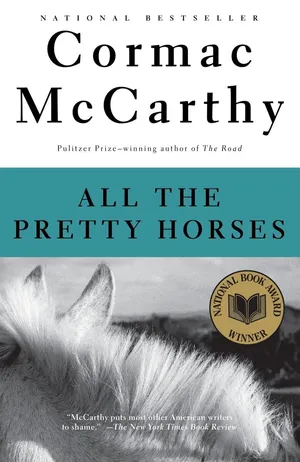
The title doesn’t do this book any favors, and the sappy trailer of the movie adaption with Matt Damon and Penelope Cruz doesn’t either, so it was easy to avoid for a long time. But eventually it bothered me. I’d enjoyed Blood Meridian and The Road long ago, as well as the Coen Brothers’ adaptation of No Country for Old Men. How could the man who made such hyper-violent stories, who was so cool he didn’t need to follow the rules of punctuation, write up some book for little girls about ponies?
Well it turns out I was wrong, it’s classic Cormac McCarthy, in the same league as anything else he wrote (though it is less violent). It’s a gritty Western adventure following a stoic young cowboy. What else do you need to know?
A Swim in a Pond in the Rain
George Saunders
January, 2022
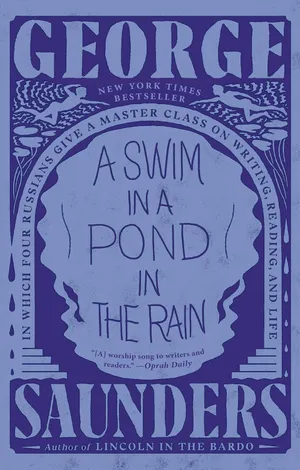
If you haven’t read George Saunders’ short story collections, read those first and get back to me (Tenth of December, Pastoralia, CivilWarLand in Bad Decline, etc.—alas, I wasn’t into Lincoln in the Bardo, his Booker-prize-winning foray into long fiction).
Beyond all the prizes, Saunders is the ultimate writer’s writer, universally adored by all the giants. And while he may skewer the dehumanizing effects of capitalism, he is also a true humanist and the most empathetic of writers. Those two aspects make him someone you want to listen to when he talks about the craft of writing. This book is basically that, an adaptation of his creative writing class that he’s been teaching at Syracuse for over 20 years. It’s focused on dissecting seven great Russian short stories from Chekhov, Turgenev, Tolstoy, and Gogol, including my favorite short story of all time, Tolstoy’s “Master and Man.” The stories are included preceding Saunders’ discussions, and in the audiobook, they are delightfully read by the likes of Nick Offerman, Rainn Wilson, and Glenn Close. The format is a nice change of pace from normal reading, with a chance to let the works sink in and think critically about what makes them tick.
Endurance
Alfred Lansing
September, 2021
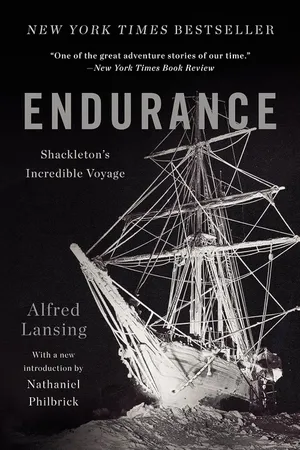
Oh, you think you’ve had a bad day? Check out Endurance, the unparalleled tale of survival, and my nomination for the world’s greatest audiobook, and then compare notes with Ernest Shackleton. In the ultimate case of the Mondays, his ship gets stuck in the ice and sinks in the South Atlantic in 1915, and somehow the ENTIRE crew of 28 stays alive, suffering from frostbite and gangrene, eating dogs, seal fat, and belt leather, drifting on ice packs and traversing stormy oceans and glaciers and treacherous mountains for OVER A YEAR to make it back to civilization. Today, this sort of feat could never happen. They would have satellite phones or Starlink. Drones would deliver Chipotle. This level of heroism is frozen in the past.
Homeland Elegies
Ayad Akhtar
January, 2021
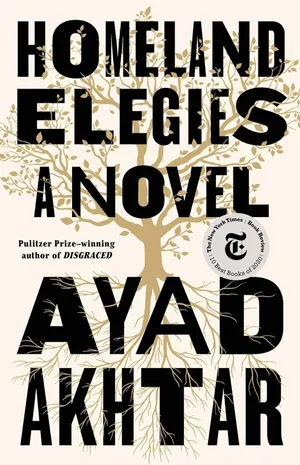
This book, an intentional blur between novel, memoir, and essay, is a reckoning about what it means to be an American, particularly a Muslim one in post 9/11 America. On on side is Akhtar’s father, a Pakistani immigrant and a doctor who once treated Trump and now supports him as a presidential candidate. He is, in his way, a true believer in America. Akhtar’s mother, meanwhile, also an immigrant doctor, forever yearns for her lost home and lover. For the son, a successful playwright, it is, like for so many second generation immigrants, complicated. He never used to doubt his belonging, but eventually realizes that he has been pretending to feel welcome here.
The prose is sharp-edged and the story impressively covers a large swath of human experience. From the poorest of the poor in a shantytown he and his father visit outside of Abottobad Pakistan (even driving past the dirt road leading Osama Bin Laden’s compound a few years before his death), to his own dip into a life of extreme luxury in New York, hobnobbing with celebrities and billionaires etc., after he starts hanging out and investing with a super-wealthy hedge fund manager who deals in debt.
Akhtar feels like a spiritual successor of Phillip Roth and Salman Rushdie, and this work is an important recent addition to the American canon.
Pachinko
Jin Min Lee
January, 2021
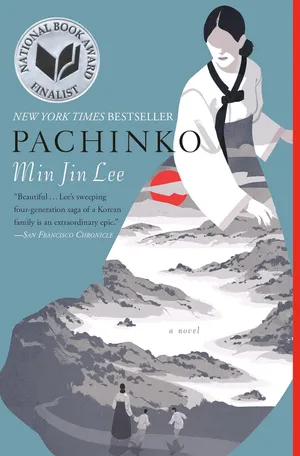
This is a sweeping multi-generational saga of Korean immigrants in Japan, which sounds kind of boring to be honest, but you have to trust me, it is absolutely gripping, practically unputdownable!
One small part of the appeal is that I’m a sucker for humble folks persevering—that warm feeling from reading The Good Earth still sticks with me. In a small fishing village in Korea in the early 1900’s, Hoonie, the only one of his parents’ children to survive into adulthood, is considered unmarriagable because of his club foot, but he manages to find a match anyway. When his daughter Sunja, the heart of the book, gets knocked up by a wealthy older businessman who’s married, she takes up with Isak, a sick Christian minister lodging with her mother. They move in with the family of Isak’s brother, in Osaka, Japan, where Koreans are pushed into ghettos and treated as second-class citizens. When Isak is imprisoned unjustly, Sunja starts a kimchi business to pay the bills. See? So much humility, such perseverance. The struggles modernize over two more generations (one character is dying of AIDS), and as you can imagine, there are some pertinent events on the world stage in the middle of the century that affect Japan and Korea. Like the steel balls bouncing from pin to pin in the titular game (kind of like pinball or Plinko, forgive my ignorance), the characters are subject to the whims of fate, and I’m happy to follow along with them.
Pachinko was also adapted recently into a TV show on Apple+, which is well done too, but doesn’t capture the full magic of the source material, nor does it ever quite rise above its terrific intro sequence of the characters in exuberant dance.
The Flamethrowers
Rachel Kushner
April, 2020
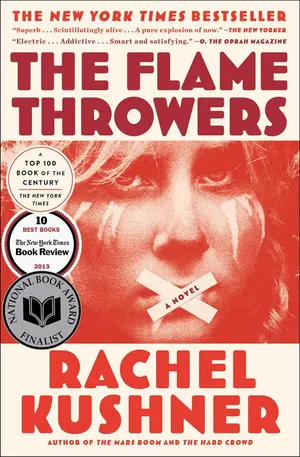
Years ago, I followed some tip to download the advertising profile Facebook had on me. It turned out to be laughably inaccurate, convinced that my main obsession was football, but also that I was like a grandma or something. The only perceptive observation I recall was that I’m not an early adopter. I’ve no idea how it came to that conclusion, but I realized it was spot on—I am rather circumspect, and do tend to scope the scene for a while, sometimes a long while, until it’s unavoidable, before going in.
So I knew of this book when it came out in 2013, but eventually came to it out of order, after finally giving in and reading The Mars Room, Kushner’s follow-up set in female prison, and enjoying it so thoroughly.
The protagonist of this book is not like me—she jumps right in. It’s 1975, and fresh from art school, she goes out to New York and gets drawn into the art scene, dates an artist who’s the heir to an Italian motorcycle company, dives head first into motorcycle racing (also literally—she eats some major shit), and runs away to Rome to join a radical political movement. It’s raw, it’s metal, it shreds, it’s sexy, it’s badass. It’s whatever you need it to be. I’ve already done the waiting and scene-scoping for you, so you can skip ahead and get this book already!
Orange World
Karen Russell
May, 2019
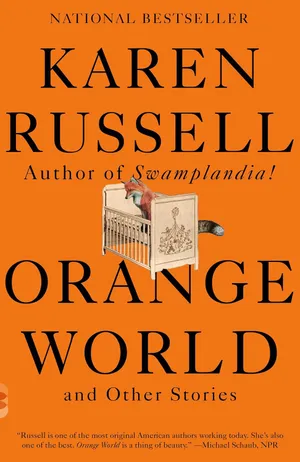
When I first read the title story of this collection in The New Yorker, I was like “wtf” (complimentary). it was probably the best one I had read in the magazine all year. It’s a parable about early motherhood, with a mom making a bargain with a devil that entails her breastfeeding him nightly. As dark as that sounds, Russell’s stories are generally light and funny, if strange. They are full of fantastical elements—two Depression-era women crash a mountain lodge party full of ghosts, a Joshua tree possesses a young woman, a teen falls in love with a two-thousand-year-old girl pulled from a bog—but they take place basically in our own banal reality. In the New Parents class of the story, “Green World” is “a fantasy of soft corners and infinite attention. Orange World, it seems, is this world, viewed through a spyglass of fire…Green World is the ideal, but Orange World is where most of us live.”
Outline
Rachel Cusk
January, 2018
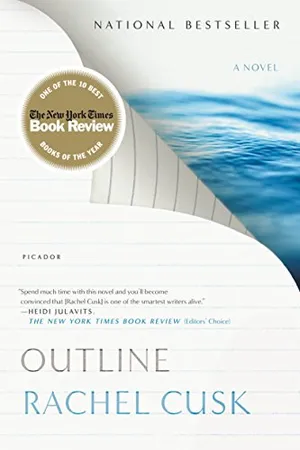
This is the book that made me want to start a book club. It sat in my wish list for a couple of years before reviews of the sequel reminded me of it. I regretted the delay. Anyone around me while I was reading it in early 2017 heard about this book. My subway rides and lunch breaks were ecstatic. I was tingly with love. About six months later, Rachel Cusk was profiled in The New Yorker under the headline “Rachel Cusk gut-renovates the novel”, which is a fitting description. There has been a discussion in literary circles about autofiction as the new trend in the evolution of the novel, led by Karl Ove Knausgaard and his hyperrealistic My Struggle series, along with Ben Lerner, Sheila Heti, and, depending on your definitions, Elena Ferrante. But Cusk seems to have struck out in her own direction—it’s tough to even characterize what it is she’s doing.
While I’ve seen echoes of this before—the strangers unburdening themselves to the narrator who’s trying to get to his piano performance in Kazuo Ishiguro’s The Unconsoled, the dialogue across the years in W.G. Sebald’s Austerlitz—I couldn’t shake the feeling while reading Outline that Cusk was indeed creating something foundational.
The plot is simple. A woman goes to Athens to teach a summer writing course, and she converses with various people: her seatmate on the flight, a colleague, her pupils, a friend in the city. The others do almost all of the talking, long, revelatory, thought-provoking monologues. Every page or two there is some wonderful image or comparison or phrasing, it’s fully absorbing. We gather that the narrator, Faye, is divorced. Sometimes one of her kids calls and she switches modes. But we don’t learn much else about her directly. Instead, she becomes this vessel for other people to express themselves, and we only see her in outline, hence the title. What’s interesting and makes this capital-A Art is the way this theme is threaded between all the conversations, which are various meditations on relationships and how we are defined by other people.
Transit and Kudos, the sequels, are fantastic as well. Kudos, which Cusk signed for me at an event, is particularly biting, and ends the series on a high note, with a potent and unforgettable image of the misogyny of our age.
Outline was one of several books that inspired me to start writing again, so it predated my own project. But I read the sequels while in the midst of it. They all lit a jealous fire in me. How did she do whatever it was she was doing? This feeling kept me focused though, because seeking to imitate her would be folly. Cusk is operating on her own level.